
If you’ve checked Google today, you’ll see that they’ve set up a Doodle to celebrate Charles Perrault, the French author who gave us such classics as Little Red Riding Hood, Sleeping Beauty, and Cinderella, among others.
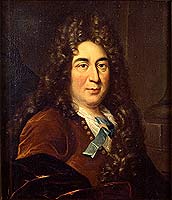 It’s no secret that we here at the Free For All are big fans of fairy tales, magic, fantasy, and those who write them. Last week, we celebrated the birthday of Jacob Grimm, who, along with this brother, became the most renowned mythologists in western culture. Their work focused primarily on collecting stories from around Germany, concentrating on how they differed, agreed, and evolved over place and time. But what sets Charles Perrault apart from the industrious Grimms is the fact that he invented his stories, based on pre-existing French fables, some two centuries before the Grimms began their work–and he was so popular that the Grimms actually recorded a version of Sleeping Beauty that made its way to Germany via word-of-mouth.
It’s no secret that we here at the Free For All are big fans of fairy tales, magic, fantasy, and those who write them. Last week, we celebrated the birthday of Jacob Grimm, who, along with this brother, became the most renowned mythologists in western culture. Their work focused primarily on collecting stories from around Germany, concentrating on how they differed, agreed, and evolved over place and time. But what sets Charles Perrault apart from the industrious Grimms is the fact that he invented his stories, based on pre-existing French fables, some two centuries before the Grimms began their work–and he was so popular that the Grimms actually recorded a version of Sleeping Beauty that made its way to Germany via word-of-mouth.
Perrault was born on this day in 1628 in Paris, and trained as a lawyer before turning to a career in government service, and finally, to writing, though most of his work dealt in the realm of fables. He helped Louis XIV design 39 fountains for the labyrinth at the Palace of Versailles that were constructed between 1672 and 1677. Each fountain featured an animal from Aesop’s Fables, and the water that jetted out of each creature’s mouth was designed to look like conversation between them all. Perrault also wrote the guidebook to accompany the labyrinth for visitors.
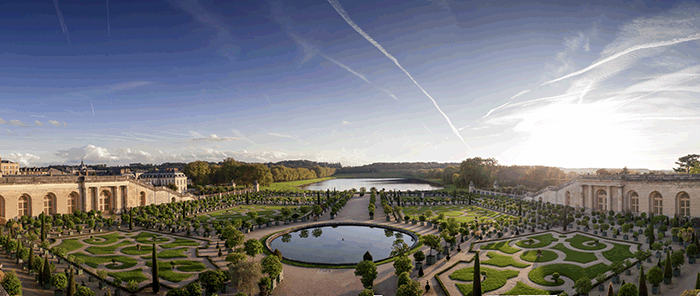
He was also involved in the evolution of opera, which was developed as an art form during Perrault’s lifetime. When a close family friend came under attack from critics for writing a modern opera (one not based on Greek mythology), Perrault wrote a now-famous editorial stating that, thanks to the Enlightenment and the scientific and philosophical progress of the current age, that modern art was better than anything that had been produced by the Ancients.
 It is interesting, then, that Perrault used ancient folktales and fables as the basis for his own fairytales; to be fair, though, he reinvented each so much that they became new and unique, a genre unto themselves (though he did publish his first collection of these stories under his son’s name…just to be safe…). Many of these stories were inspired by the world Perrault saw around him–one of his friends, the Marquis of the Château d’Oiron, because the inspiration for the Marquis de Carabas Puss in Boots, while the nearby Château d’Ussé was the model for the castle in Sleeping Beauty. Like the originally Grimm tales, these stories are far more gruesome and disturbing in the original text than in the versions we read today–these were cautionary tales, meant to warn children of the danger of strangers (like the Big, Bad Wolf) and wandering off alone (usually into the woods), and don’t hold back on the dangers that wait for children who misbehave. But despite, or, perhaps, because of the unsettling, vivid realities that these stories create, Perrault’s tales live on, and still form the basis of some of our earliest literary experiences.
It is interesting, then, that Perrault used ancient folktales and fables as the basis for his own fairytales; to be fair, though, he reinvented each so much that they became new and unique, a genre unto themselves (though he did publish his first collection of these stories under his son’s name…just to be safe…). Many of these stories were inspired by the world Perrault saw around him–one of his friends, the Marquis of the Château d’Oiron, because the inspiration for the Marquis de Carabas Puss in Boots, while the nearby Château d’Ussé was the model for the castle in Sleeping Beauty. Like the originally Grimm tales, these stories are far more gruesome and disturbing in the original text than in the versions we read today–these were cautionary tales, meant to warn children of the danger of strangers (like the Big, Bad Wolf) and wandering off alone (usually into the woods), and don’t hold back on the dangers that wait for children who misbehave. But despite, or, perhaps, because of the unsettling, vivid realities that these stories create, Perrault’s tales live on, and still form the basis of some of our earliest literary experiences.
So come into the library today, and pick out some of these books to help celebrate the birthday of Charles Perrault!
 The Complete Fairy Tales of Charles Perrault: This beautifully illustrated edition of Perrault’s tales brings together not only his most well-known tales (like”Little Red Riding Hood”, but also “Puss in Boots”), but also some of his lesser-known ones, like “The Fairies”. The Library also has a collection of Perrault’s tales illustrated by Gustave Doré in 1867. These illustrations show a completely different side of these tales, and its truly fascinating how much Doré’s imagination changes the tone of the tale.
The Complete Fairy Tales of Charles Perrault: This beautifully illustrated edition of Perrault’s tales brings together not only his most well-known tales (like”Little Red Riding Hood”, but also “Puss in Boots”), but also some of his lesser-known ones, like “The Fairies”. The Library also has a collection of Perrault’s tales illustrated by Gustave Doré in 1867. These illustrations show a completely different side of these tales, and its truly fascinating how much Doré’s imagination changes the tone of the tale.
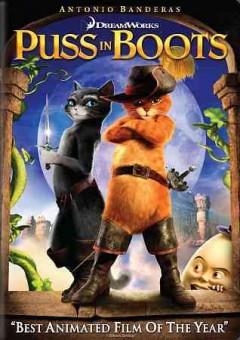 Puss in Boots: Ok, so perhaps this Dreamworks production isn’t quite an adaptation of Perrault’s original tale, but I’m going to list it here anyways, because it’s just that cute, clever, and funny (and because the feline star looks remarkably like my cat, Oscar Wilde). This film is, technically, a prequel to the Shrek films, but it’s also a brilliant stand-alone film about the adventures of one of literatures most courageous and charismatic felines that will entertain kids and adults alike.
Puss in Boots: Ok, so perhaps this Dreamworks production isn’t quite an adaptation of Perrault’s original tale, but I’m going to list it here anyways, because it’s just that cute, clever, and funny (and because the feline star looks remarkably like my cat, Oscar Wilde). This film is, technically, a prequel to the Shrek films, but it’s also a brilliant stand-alone film about the adventures of one of literatures most courageous and charismatic felines that will entertain kids and adults alike.
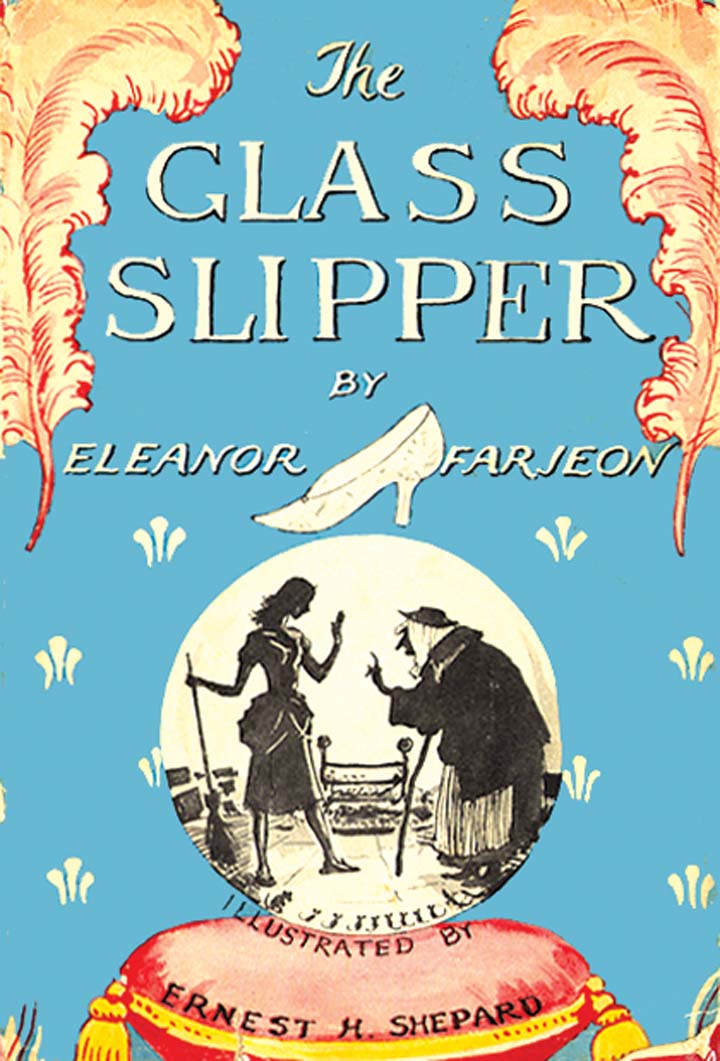 The Glass Slipper: This retelling of Perrault’s “Cinderella” by Eleanor Farjeon is one of the most beautiful and engaging versions you can read. This version takes out a good deal of the Perrault’s violence and cruelty, and substitutes character analysis and insight in order to make this a story with heart, soul, and substance (the inclusion of Cinderella’s father makes this story even more interesting. Even better, this version features illustrations by E.H. Shepard, who created the classic illustrations for Winnie the Pooh.
The Glass Slipper: This retelling of Perrault’s “Cinderella” by Eleanor Farjeon is one of the most beautiful and engaging versions you can read. This version takes out a good deal of the Perrault’s violence and cruelty, and substitutes character analysis and insight in order to make this a story with heart, soul, and substance (the inclusion of Cinderella’s father makes this story even more interesting. Even better, this version features illustrations by E.H. Shepard, who created the classic illustrations for Winnie the Pooh.
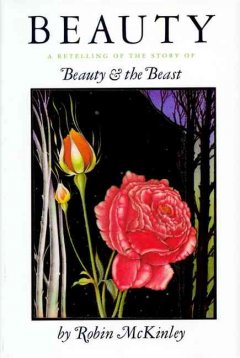 Beauty: Robin McKinley is one of my favorite YA authors, and this retelling of Perrault’s “Beauty and the Beast” remains among my favorite of her books. Like Farjeon’s retelling, this story sticks close to the original story–a young, beautiful girl is forced to live in a castle with a prince who has been transformed into a hideous beast, and helps him break the spell that is slowly killing him–but adds layers of complexity and dimension to the plot and characters that transforms this story into a novel with depth and power. McKinley’s writing style is stunning, making this story, as well as her numerous others, easy to read, and impossible not to love. For another adaptation of this story, check out Beastly, which was also adapted into a film.
Beauty: Robin McKinley is one of my favorite YA authors, and this retelling of Perrault’s “Beauty and the Beast” remains among my favorite of her books. Like Farjeon’s retelling, this story sticks close to the original story–a young, beautiful girl is forced to live in a castle with a prince who has been transformed into a hideous beast, and helps him break the spell that is slowly killing him–but adds layers of complexity and dimension to the plot and characters that transforms this story into a novel with depth and power. McKinley’s writing style is stunning, making this story, as well as her numerous others, easy to read, and impossible not to love. For another adaptation of this story, check out Beastly, which was also adapted into a film.
Wishing you a day of Happily Ever After, dear readers!
